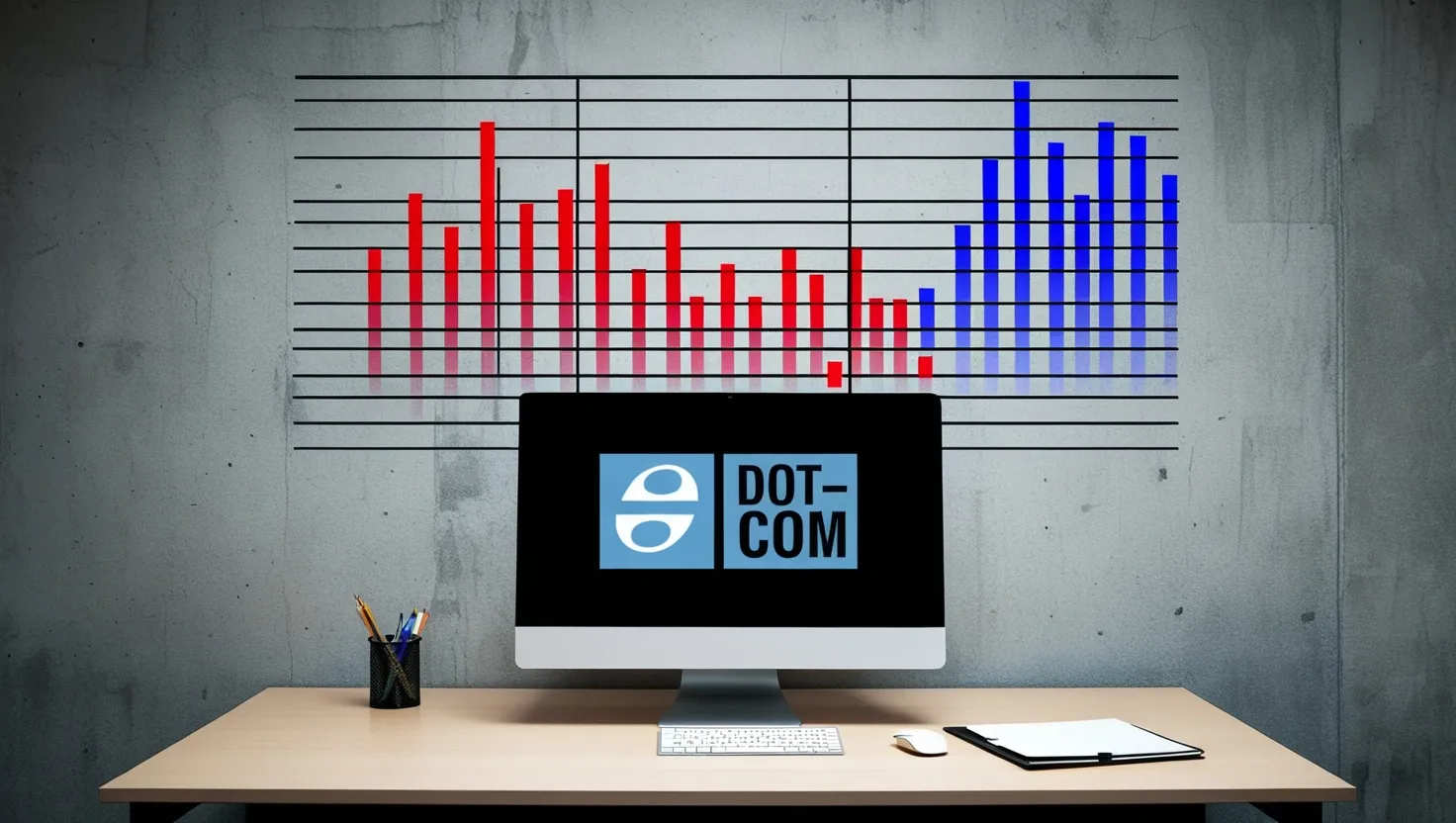The dot-com bubble, a phenomenon that captivated the world in the late 1990s and early 2000s, is a tale of unbridled enthusiasm, speculative frenzy, and ultimately, a harsh reality check. As we reflect on this era, it becomes clear that the lessons learned are just as pertinent today as they were back then.
The Rise of the Dot-Com Era
Imagine a time when the internet was the new frontier, full of promise and untapped potential. This was the era when companies with little more than an idea and a website could garner millions in investment. The air was thick with excitement, and everyone wanted a piece of the action. As Warren Buffett once said, “Price is what you pay. Value is what you get.” But during the dot-com bubble, the distinction between price and value was often blurred.
Investors were pouring money into startups that had yet to turn a profit, betting on the promise of future growth. Companies were going public with valuations based on metrics like “eyeballs” or website hits, rather than traditional financial indicators. It was a time when the phrase “get big fast” became a mantra, and the concept of profitability seemed almost quaint.
The Role of Venture Capital and Media
Venture capitalists played a pivotal role in fueling this bubble. Attracted by the potential for high returns, they invested heavily in dot-com startups, often without scrutinizing the business models or financial health of these companies. This influx of capital further inflated the bubble, as companies with no clear path to profitability were valued in the millions.
The media also contributed significantly to the frenzy. Stories of instant wealth and the transformative potential of the internet filled the headlines, creating a “fear of missing out” among investors. Media outlets peddled overly optimistic expectations, adding fuel to the fire and further inflating the bubble.
The Burst of the Bubble
By March 2000, the dot-com bubble had reached its peak. But as the reality began to set in that many of these companies were not delivering on their promises of profitability, the bubble began to burst. Investor confidence waned, and stock prices started to fall. The panic sell-off that followed drove stock prices down even further, leading to massive losses.
By the end of 2001, most dot-com companies had gone bankrupt, and investors had lost billions of dollars. The economic impact was significant, with a decline in consumer spending and a slowdown in economic growth. The collapse also led to a surge in unemployment as companies laid off employees.
Lessons Learned
So, what can we learn from this tumultuous period? One of the most critical lessons is the importance of sustainable business models. Companies need clear paths to profitability, rather than relying on continuous investment and speculation. As Peter Lynch, the legendary investor, once said, “Go for a business that any idiot can run – because sooner or later, any idiot probably is going to run it.”
The dot-com bubble also highlighted the dangers of overvaluation and the importance of traditional financial metrics. Investors should not ignore these fundamentals in favor of hype and speculation. Due diligence emerged as a critical component of investment strategies, with investors conducting thorough examinations of a startup’s financial health, business model, and market potential before committing funds.
Adaptability and Innovation
Another key takeaway is the importance of adaptability and flexibility. The tech landscape is constantly evolving, and companies that can adapt quickly to changing market realities are more likely to survive and thrive. Innovation is crucial, but it must be balanced with feasibility and a clear understanding of market needs.
Modern Tech Landscape
Fast forward to today, and we see a tech landscape that bears some striking similarities to the dot-com era. High valuations for tech companies, the emergence of new technologies like blockchain and AI, and the ongoing quest for the next big thing all echo the sentiments of the late 1990s.
However, there is a difference. Today’s investors are more cautious, more selective, and more focused on companies with solid fundamentals. The venture capital sector has become more discerning, looking for startups with clear and viable paths to profitability.
Balancing Innovation and Prudence
As we navigate the modern tech landscape, it’s essential to strike a balance between innovation and prudence. We must be open to new ideas and technologies but also grounded in sound financial principles. The cyclical nature of markets reminds us that what goes up can also come down, and it’s crucial to be prepared for both scenarios.
In the words of Benjamin Graham, “Price is what you pay. Value is what you get.” This wisdom is timeless and serves as a reminder to always distinguish between the two.
Questions for the Future
As we look ahead, several questions arise. How can we ensure that the lessons of the dot-com bubble are not forgotten? How can we balance the excitement of new technologies with the need for sound financial judgment? And what role should due diligence play in our investment decisions?
These are questions that every investor should ponder, especially in an era where technology is evolving at an unprecedented pace.
The Lasting Impact
The dot-com bubble was more than just a financial event; it was a cultural phenomenon that reshaped how businesses operate and how people interact with technology. It laid the groundwork for today’s digital economy and taught us valuable lessons about innovation, risk management, and the importance of adapting to market realities.
In conclusion, the dot-com bubble serves as a cautionary tale and a guide for modern tech investors. It reminds us of the dangers of speculative bubbles and the importance of careful analysis and prudent investment decisions. As we move forward in this rapidly evolving tech landscape, it’s crucial to remember the past while embracing the future with a balanced and informed approach.
As the legendary investor, Charlie Munger, once said, “All I want to do is get richer by owning good stocks.” For today’s tech investors, this means combining innovation with sound financial principles, ensuring that the excitement of new technologies is tempered with the wisdom of past lessons.






